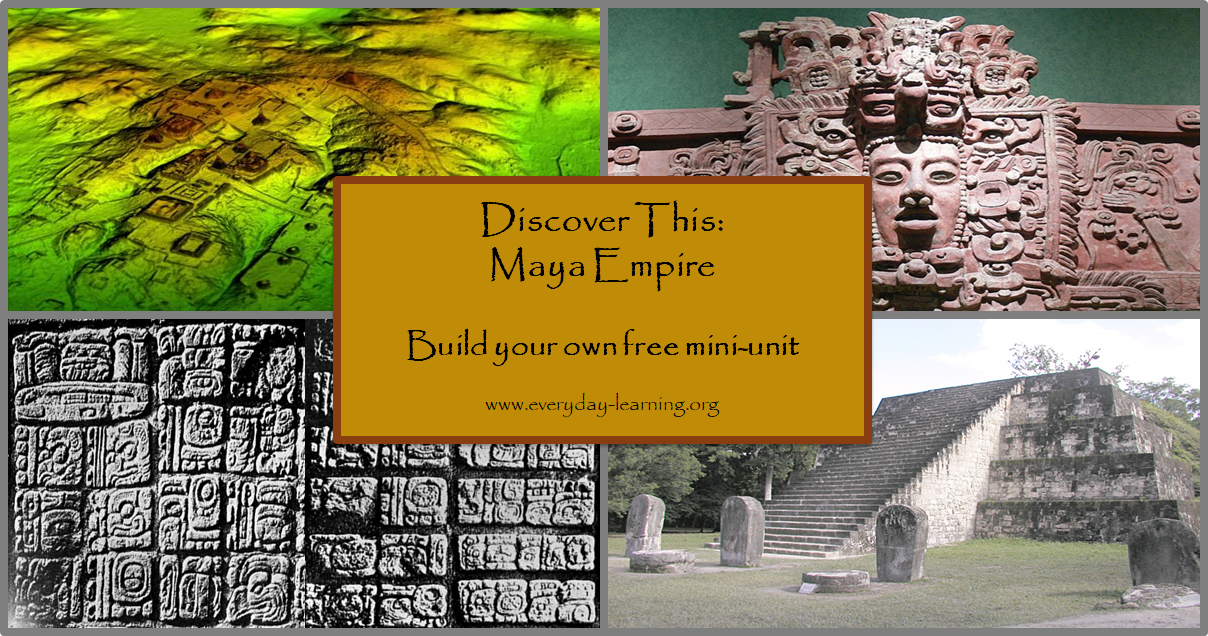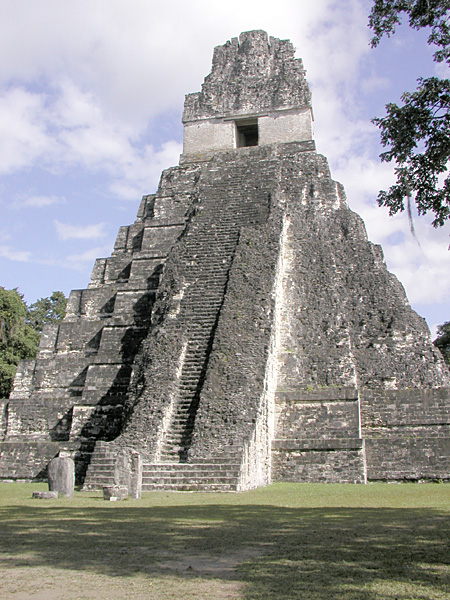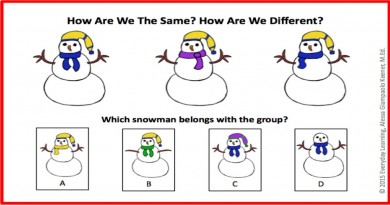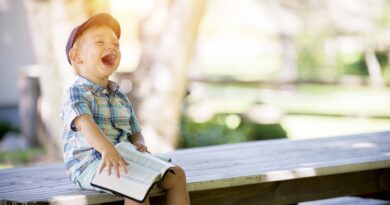Discover This: Maya Empire
In 2018, the world learned about the discovery of 60,000 previously unknown ancient Mayan archaeological structures. My first thought, when I scanned the original headline, was, “How is it even possible to miss seeing 60-freaking-thousand structures!?!?!” And then I was like, “Oh, yeah – trees and forests and 1,000 years of all kinds of vegetation overgrowth.” Until I finally thought, “Wow, it’s time for an Ancient Mayan unit study!”

Rarely in the 21st century do we stumble upon discoveries of such magnitude that history, as we know of ancient Mesoamerica, will literally be rewritten. The National Geographic Channel aired a 45-minute show featuring the findings, which you can watch here.
When most people think of ancient civilizations, they usually envision Egyptian pyramids. They don’t generally think of the Americas as being home to advanced ancient people. Yet, the Ancient Mayans began to develop complex societies in Southern Mexico and Central America as early as 2000 BCE. This is the same time the Ancient Egyptian Middle Kingdom began to flourish. [The Incan Empire and Macchu Pichu came much later in the 1400s CE.]
If your ancient history curriculum gives short shift to Mesoamerica, you can build your own Ancient Mayan unit study with these 8 free learning ideas. Even if your kid loves math and science more than history, we’ve put together exploration activities that even your most die-hard science nerd won’t refuse to learn.
Create an Ancient Mayan Unit Study
- Get to Know the Maya
Start by grabbing an atlas or visit Google Maps and check out where Guatemala – the site of the “Maya Megalopolis” – is situated between Mexico and the Panama Canal. Next, click over to the Smithsonian National Museum of the American Indian Maya page for some excellent kid-friendly background on Maya, their mythology, and more.
- How LIDAR Works
Plan on jumping down all kinds of rabbit holes once you start learning about the science behind Light Detection and Ranging. For example, you can:
- Explore the similarities and differences between LIDAR, sonar, and radar
- Create your own topographical map of your town with this step-by-step guide
- Learn about the electromagnetic spectrum and how it is used by LIDAR
- Go more in-depth with LIDAR technology or explore how it’s being used in North America to explore volcanoes
- Heiroglphyics
If you like solving logic puzzles, then you might get frustrated by the artistry that kept the Maya writing system from being read for centuries. Still, you can watch the hour-long Nova Cracking the Maya Code show to find out how a 12-year old kid discovered the key to understanding the ancient texts. Then, download free Maya study guides and dictionaries to learn more about the glyphs.
Sign-Up for More Free Everyday Learning Ideas
- Pyramids Around the World

Start with the Smithsonian’s Ancient Pyramids and The Weather Channel’s Pyramid Photos to see some of these amazing engineering feats, such as the Tikal Pyramids in Guatamala. Next, watch The Maya: Engineering an Empire to learn how the Maya built their pyramids differently from the Egyptians.
- Maya Math
Maya are recorded in history as having used the concept of zero hundreds of years before Europeans were introduced to the idea. Read a short history about Maya math and their contributions to the 365-day calendar (and that frightful end-of-the-world prediction in 2012), or go a little more in-depth in the topic. With younger kiddos, create math worksheets using the Maya numbering system.
- Discover Other Central and South American Empires
As you’re working your way though your Ancient Mayan unit study, create a compare and contrast chart identifying other ancient civilizations in the Americas. Check out the Olmec (1500-400BC), the Toltec (why so much disagreement about them), the Taino (they predate Columbus, but find out the connection with him), and the Aztecs and Incans (neither of which are technically ancient but I know you’ve probably heard about Tenochtitlan and Machu Pichu, so you might as well get it on your timeline). Read with a purpose and be sure to include information about the dates when these civilizations flourished, modern-day countries associated with each group, examples of a famous ruin, the first known European contact, and theories on why or how the civilizations ended.
- To Dig or Let Lie
The amazing Maya discovery sits amidst the Maya Biosphere Reserve, an environmentally protected area that does not allow deforestation. Read about why the reserve was created and then challenge your kids to come up with reasons why this archaeological discovery should be excavated – OR – why it should be left alone.
- Aligning With the Stars
Back in 2016, the Internet got caught up in a Canadian teenager’s discovery of an Ancient Maya city using a star map. Eventually, Maya scholars debunked the report, despite satellite images purportedly supporting the claim. Read the story and discuss what research bias is and how it can lead to false conclusions.




